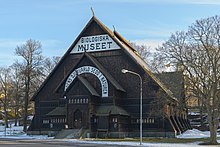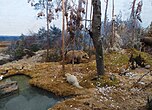.mw-parser-output .hidden-begin{box-sizing:border-box;width:100%;padding:5px;border:none;font-size:95%}.mw-parser-output .hidden-title{font-weight:bold;line-height:1.6;text-align:left}.mw-parser-output .hidden-content{text-align:left}@media all and (max-width:500px){.mw-parser-output .hidden-begin{width:auto!important;clear:none!important;float:none!important))You can help expand this article with text translated from the corresponding article in Swedish. (March 2024) Click [show] for important translation instructions.
Machine translation, like DeepL or Google Translate, is a useful starting point for translations, but translators must revise errors as necessary and confirm that the translation is accurate, rather than simply copy-pasting machine-translated text into the English Wikipedia.
Do not translate text that appears unreliable or low-quality. If possible, verify the text with references provided in the foreign-language article.
You must provide copyright attribution in the edit summary accompanying your translation by providing an interlanguage link to the source of your translation. A model attribution edit summary is Content in this edit is translated from the existing Swedish Wikipedia article at [[:sv:Biologiska museet, Stockholm]]; see its history for attribution.
You may also add the template ((Translated|sv|Biologiska museet, Stockholm)) to the talk page.
For more guidance, see Wikipedia:Translation.
Biologiska museet | |
 Biologiska museet's wooden exterior | |
 | |
| Established | November 11, 1893 |
|---|---|
| Location | Hazeliusporten, Djurgården in Stockholm, Sweden. |
| Public transit access | Bus 47 or 44, bus stop Hazeliusporten. |
| Website | www |
Biologiska museet is a museum located in Djurgården in Stockholm. It exhibits a collection of stuffed European birds and mammals in dioramas. Some of the diorama backgrounds were created by artist Bruno Liljefors, known for his dramatic paintings of Scandinavian wildlife. The museum was built in 1893 after a design by architect Agi Lindegren who was inspired by medieval Norwegian stave churches.[1]







